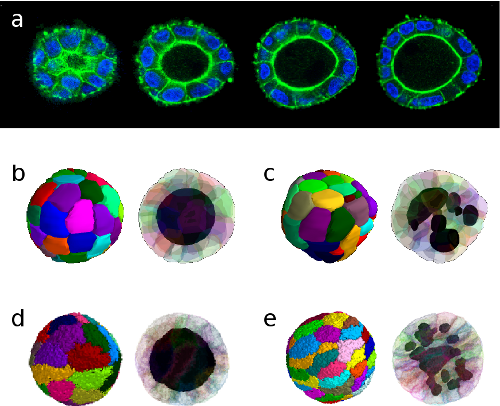10060 Candiolo, Torino, Italy
b) School of Chemistry and Molecular Biosciences, University of Queensland,,
St Lucia, Queensland, Australia
c) Department of Anatomy, University of California, San Francisco, California, USA
d) Institut Pasteur, Unit Physics of Biological Systems, CNRS URA 2171,,
F-75015 Paris, France
Epithelial tissue morphodynamics is a crucial aspect in metazoan development that lends itself to be studied by means of in vitro representative models. Cysts serve as a paradigm for the formation of hollow spherical structures in vivo. The orderly development of cell aggregates into spheroidal monolayers delimiting a single lumen is a process subject to mechanical constraints and depends on the establishment and maintenance of cellular apico-basal polarity. In order to characterize in detail the geometry and topology of growing cysts, we reconstructed their three-dimensional structure by means of computer-assisted segmentation. We show that cell-cell contact statistics bears a clear signature of the out-of-equilibrium character of cyst morphogenesis. Out-of-equilibrium dynamics drives the appearance of aberrant multiluminal phenotypes, unless strict control of cell division geometry is enforced. Theoretical modeling and numerical simulations allow for a quantitative comparison with experimental results and unveil the presence of multiple local equilibria associated with geometrically frustrated configurations. The single-lumen phenotype is rescued and the quasi-equilibrium topology is recovered upon inducing tissue fluidization through the inhibition of ROCK activity.
